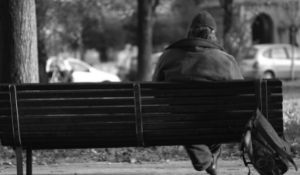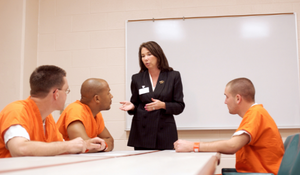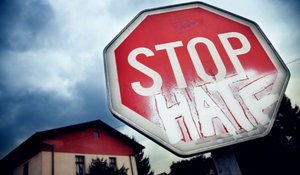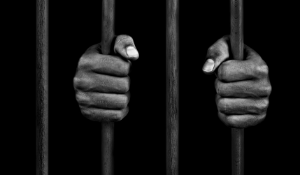Asperger's syndrome is a neurodevelopmental condition characterized by significant difficulties in social interaction and nonverbal communication combined with restricted and repetitive patterns of behavior and interests. The syndrome has been merged with other conditions into autism spectrum disorder (ASD) and is no longer considered a stand-alone diagnosis. Often associated with chromosomal abnormalities or monogenic alterations, ASDs affect roughly 60 million people globally. One in 54 children in the United States is diagnosed with ASD. The diagnosis is higher in boys, with a male-to-female prevalence ratio of 3.5. There are no diagnostic markers for ASD, and the diagnosis is based on repetitive behaviors, impaired social communication and interaction.
Topics: what social workers do, social justice
In the normal course of business, this blog researches and reports the issues that are having an impact on the world of social services. However, when journalists at large are out in front on important stories we are eager to share their work here in our blog space. Today, we would like to summarize the reporting of New York Times journalists Michael Kimmelman and Lucy Tompkins on the life changing work in support of the homeless going on in the city of Houston.
Topics: Homeless & Food Pantry, social justice
4 Elements of Successful Re-entry Programs for Inmates
As you proceed to discuss the major elements of effective inmate re-entry as part of the greater transitional justice system, it is necessary to recognize why society must conceive and respect inmates as Individuals, not simply prisoners.
Society and social services must begin to treat inmates as individuals from the outset of their sentence... Beginning Early!
Topics: criminal justice, social justice, Adult Re-Entry
Social service professors are warning the country about an economic imbalance that is beginning to threaten the most vulnerable segments of our society - income inequality. Inequality is higher now than at any time since World War II. Social work leaders say that the problem with rising income inequality is not that some people are doing well, but that others are falling behind. It suggests, they say, that our economy is failing to spread prosperity and that our gains are not being widely shared. The longer such trends continue, the greater the threat to our social fabric, our political solidarity, and the legitimacy of our free-market system.
Topics: social justice
Student Loan Debt Crisis... A Social Work Professor Explains
According to the latest student loan debt statistics, there are 45 million student loan borrowers who collectively owe $1.7 trillion of student loans.
"As is so often the case, what began as a creative solution to a social inequity became corrupted by greed and mismanagement," a professor of the history of social work told us. "Sallie Mae was the main facilitator when Congress created the student-loan program back in the 1970s during the Johnson administration. It was a profit-driven enterprise that essentially funneled money from taxpayers to colleges and universities. Congress envisioned it as a partnership between the government and banks to broaden the American dream of a college education for children of modest means."
Topics: education, what social workers do, social justice
The American Society of Addiction Medicine recognizes addiction as “a treatable, chronic medical disease involving complex interactions among brain circuits, genetics, the environment, and an individual’s life experiences. People with addiction use substances or engage in behaviors that become compulsive and often continue despite harmful consequences.”
Topics: mental health, criminal justice, social justice
Football fans see this message on the back of the Buffalo Bills' helmets
"On Saturday, January 15th, a gunman entered Congregation Beth Israel in Colleyville, TX, and held hostages for much of the day. We are grateful that all four hostages made it out safely, and thankful for law enforcement, first responders, and the security training that our partner Secure Community Network provided to this community. The horrifying attack on the Colleyville synagogue was a continuation of a troubling and unacceptable trend of attacks on Jewish houses of worship and individuals who are visibly Jewish." (The Jewish Federations of North America)
Topics: social justice
We were surprised by the results of our recent mini-poll, when we asked six case workers serving our elder population what they considered the most pressing current problem elders are facing. 3 out of 6 (50%) said, "internet scams". Internet scams?! What’s going on now? What kind of scoundrel would cheat the elderly out of the last of their nest egg?
Case workers tell us that the shameful practice of scamming seniors is on the rise. With the elderly population growing, seniors racked up more than $3 billion in losses this past year. Case workers say that the heart-breaking irony of elder fraud is that seniors are targeted because they tend to be trusting and polite.
Topics: Elderly/Aging Long Term Care, caseworkers, social justice
When prisoners in the United States are released, they face an environment that is challenging and actively deters them from becoming productive members of society. Within three years of release, 67.8 percent of ex-offenders are rearrested, and, within five years, 76.6 percent are rearrested.
Criminals are Criminals
Recidivism rates (or rates of repeat offending) are often used as a measure of effectiveness of prison systems and post-release offender management programs. What’s more, studies show that the general public believes - “once a criminal, always a criminal”. They see “ex-cons” as “criminals waiting to happen again.”
Topics: criminal justice, social justice, Adult Re-Entry
Case workers in Juvenile Justice have long been concerned about a subversive movement in the back halls of Congress and many state houses to erase any distinction between young offenders and adult criminals. As recently as the 1990s almost all 50 states overhauled their juvenile justice laws, allowing more youths to be tried as adults and scrapping long-time protections to help rehabilitate delinquent kids and prevent future crimes. Only ignorance of the history of juvenile justice in United States could be responsible for a now subdued but continued movement to “simplify” criminal justice by merging juveniles and adults together in the eyes of the law. May we take a moment to remind everyone how our juvenile justice system evolved to its present effective state.
Topics: Juvenile Justice, caseworkers, social justice











